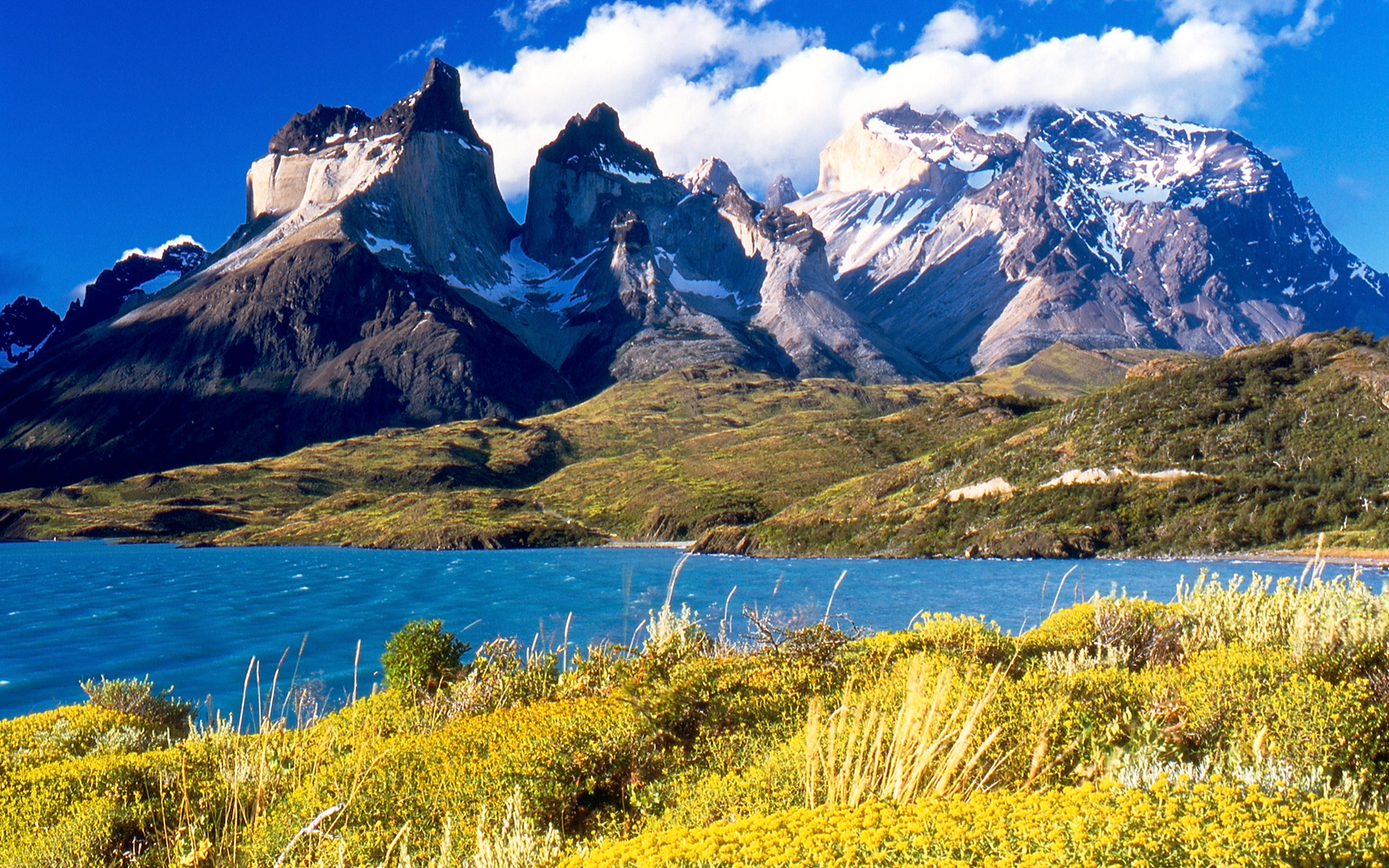
Location:
Argentina is the 2nd country from South America as surface after Brazil situated in the southern part of the continent. It has a long coastline at the Atlantic Ocean in east, but also borders with Chile in west, Bolivia and Paraguay in north and Brazil and Uruguay in east.
Area/Surface:
2.780.000 km²
Population:
41.282.000 people
Capital:
Buenos Aires 12.802.000 people
Currency:
Peso
Languages spoken:
Spanish
Religion:
Roman-Catholic
Government form:
Republic, Partial Democracy
Time zone:
-3 hours Greenwich time
Cars:
AR
Calling code:
+54

Argentina
Relief of Argentina:
Argentina has a length of more than 3.300 km and a width of more than 1.350 km with a complex relief starting with the Andes Mountains in west at the border with Chile and finishing with a long coast at the Atlantic Ocean. Many of the Andes’s peaks are higher than 6.000 m with the highest peak of the country and also of South America, Aconcagua volcano measuring 6.960 m height. In the central part of the country is the small mountain chain of Cordoba Mountains and in the northern part at the border with Bolivia and Paraguay is Gran Chaco plain.
Agriculture and resources:
The better known Argentine pampas which means flat surface in Quechua language is a low area covered with grass but no trees or shrubs. Initially covered with a high grass, today it’s an area used for agriculture, especially pastures for more than 50 million Argentine cattle and more than 14 million sheep. The Patagonian Platform is in the southern part of the country, well known in the entire world but a cold and inhospitable area with hard winds and also glaciers. (Find more journeys on blog.worldlifetimejourneys.com) However most of the National Parks of Argentina are here in Patagonia because of the beauty of this territory. Its northern part is for agriculture, but Patagonia has important resources of oil, natural gas, coal, iron, plumb and even gold.
Climate and rivers:
Argentine climate is temperate with some exceptions in the northern part where is tropical and subtropical and in the southern part where is cold. Zonda winds are very dry and hot encountered in the mountainous area. The longest river is Parana which crosses the country from north to its central part flowing into the Atlantic Ocean. Most important rivers are Uruguay, Paraguay and Iguacu and on the last one is the well known Iguacu fall. This is in the north-eastern part and measures four times the width of Niagara falls but lower in height with only 72 m.
Name, population and the capital of Argentina:
The name of the country comes from the Spanish explorers who came here in the 16th century and named the country Argentina meaning The land of silver. Buenos Aires, the capital was founded in 1580. Today, the Argentine population is composed by Europeans (Spanish, Italians, British) and other cultures as Syrians, Libyans, Jews and more than 600.000 of American Indians. On the other hand, a big part of the country has more than 90% of the population living in cities. It obtained the independence in 09 July 1816. Visit Argentina!
 Glacier National Park with Andes Mountains
Glacier National Park with Andes Mountains
in Patagonia, Argentina



